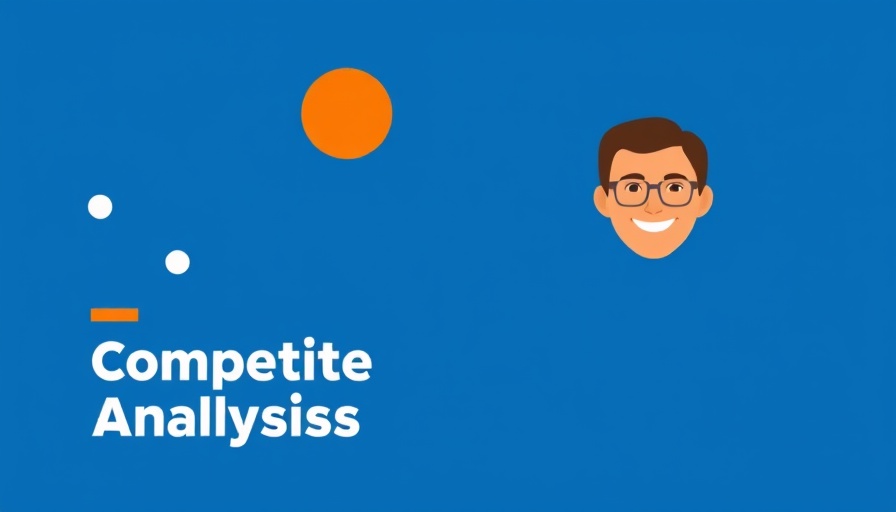
Transforming Competitor Analysis: The New Approach
In the ever-evolving world of digital marketing, being a keyboard detective is essential—not simply a follower. While the instinct might be to emulate a successful ad from a competitor and hope for the best, true marketing mastery lies in understanding the strategy behind that ad. The difference between stagnation and innovation is often found in how well you can decipher what others are doing, and then use that knowledge to carve out your unique path.
Understanding the Landscape: Why Analyzing Competitors is Crucial
Why should you delve into your competitors’ advertising strategies? The answer is simple: they may be onto something that you aren’t. A well-crafted ad might seem appealing on the surface, but beneath lies a treasure trove of insights. This approach not only saves you from potential pitfalls but allows for informed adaptations in your marketing campaigns.
Additionally, keeping tabs on competitors provides essential benchmarks for your performance. What may seem like a high cost-per-click (CPC) to you could be the industry standard in finance or insurance. By analyzing competitors, you can temper your expectations and ground your strategies in reality, rather than misconceptions.
Diving into Tools: What to Use for Competitor Analysis
The first step in your marketing detective mission is to utilize ad libraries from major platforms. These tools are not just for curious marketers; they offer a plethora of information about ads you might otherwise overlook. For instance, the Meta Ad Library is a goldmine for uncovering both active and inactive ads across various platforms.
Here, you can filter ads by language, media type, active status, and even time range. Have you ever seen an ad and thought, "This is brilliant"? When you dive into the details, you can understand the thought process behind the visuals and messaging. Was it creative storytelling? Effective call-to-action? Understanding these elements can elevate your own campaigns.
Maximizing Insights: Finding Opportunities in Gaps
One of the more intriguing aspects of competitor analysis is discovering the gaps nestled within their campaigns. Sometimes, the best insights stem from what your competitors have failed to do. Perhaps there is an audience segment they’ve neglected, or their messaging hasn't adapted to current sentiments. Those are the golden opportunities where you can meet unmet needs and differentiate your brand.
Imagine flipping the script! Instead of merely rehashing what everyone else promotes, why not pivot your messaging to highlight these overlooked aspects? By positioning yourself uniquely, you not only gain attention but also cultivate trust through authenticity.
Spotting Trends: Riding the Waves of Change
Let’s address the elephant in the room: consumer behavior shifts faster than we can say “Click-through rate.” Competitor campaigns often signal emerging trends that you should not ignore. If you notice notable changes in your competitor’s messaging or ad offers, take note. Such shifts indicate changes in consumer sentiment or market conditions that could soon impact you.
Spotting these shifts early allows you to adapt and thrive, instead of scrambling to catch up. The difference between proactive planning and reactive scrambling can determine your market positioning.
The Broader Picture: The Value of Context
As you consume all of this competitive intel, it’s vital to remember the context. The value of knowing what your competitors are up to isn’t only in benchmarking or idea generation but in forming a well-rounded understanding of your industry landscape. Context equips you to discern what truly works and why, allowing you to pivot confidently.
Having this strategic insight helps mark your trajectory. You won't just be another face in the crowd but a trendsetter—a beacon of innovation in your niche.
Final Thoughts: The Art of Intelligent Competitor Analysis
Ultimately, competitor analysis is not about engaging in a copycat game; it’s about learning, evolving, and innovating. The ads you see are not merely inspiration; they are puzzle pieces that fit together to reveal the bigger picture of the marketplace.
So the next time you launch your own campaign, remember the valuable insights gleaned from digging deeper. Don’t just look; observe. Don’t just analyze; understand. And don’t just react; lead.
Take your newfound knowledge and start crafting unique, compelling marketing strategies that break the mold. The digital world is ripe for fresh ideas, and it’s your turn to share what you’ve learned.
 Add Row
Add Row  Add
Add 




Write A Comment